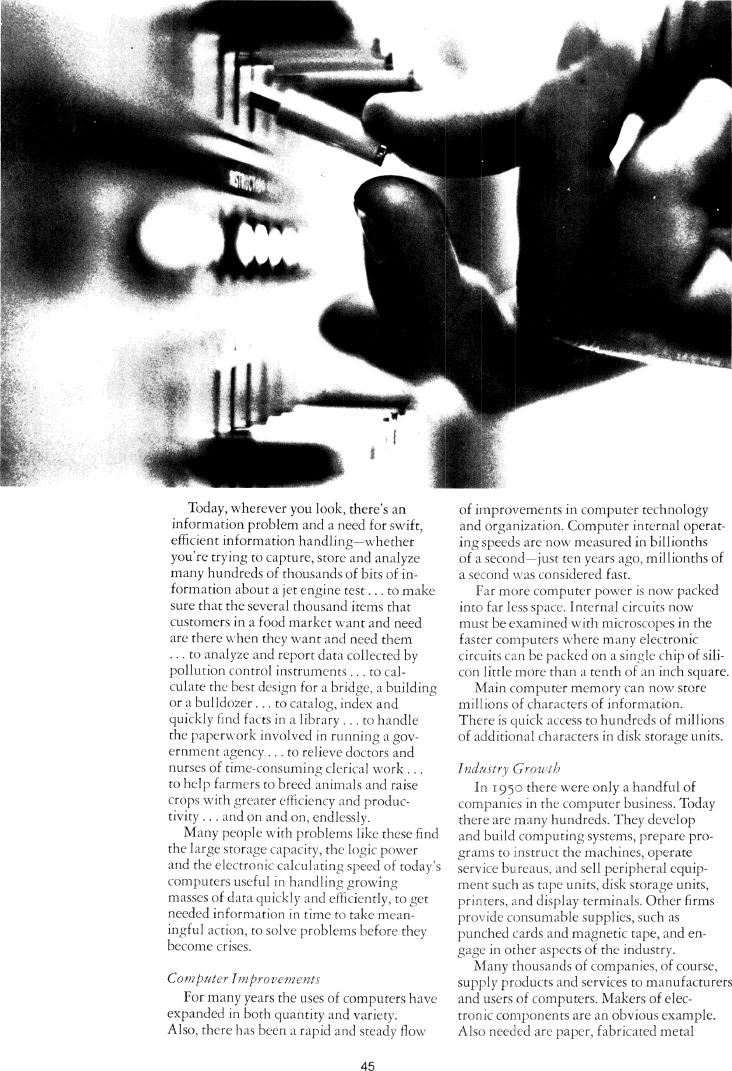The Best of Creative Computing Volume 1 (published 1976)
Profile of an Industry

Today, wherever you look, there's an information problem and a need for swift,
efficient information handling--whether you're trying to capture, store and
analyze many hundreds of thousands of bits in information about a jet engine
test...to make sure that several thousand items that customers in a food market
want and need are there when they want and need them...to analyze and report
data collected by pollution control instruments...to calculate the best design
for a bridge, a building or a bulldozer...to catalog, index and quickly find
facts in a library...to handle the paperwork involved in running a government
agency...to relieve doctors and nurses of time-consuming clerical work...to help
farmers to breed animals and raise crops with greater efficiency and
productivity...and on and on, endlessly.
Many people with problems like these find the large storage capacity, the logic
power and the electronic calculating sped of today's computers useful in
handling growing masses of data quickly and efficiently, to get needed
information in time to take meaningful action, to solve problems before they
become crises.
Computer Improvements
For many years the uses of computers have expanded in both quantity and variety.
Also, there has been a rapid and steady flow of improvements in computer
technology and organization. Computer internal operating speeds are now measured
in billionths of a second--just ten years ago, millionths of a second was
considered fast.
far more computer power is now packed into far less space. Internal circuits now
must be examined with microscopes in the faster computers where many electronic
circuits can be packed on a single chip of silicon little more than a tenth of
an inch square.
Main computer memory can now store millions of characters of information. There
is quick access to hundreds of millions of additional characters in disk storage
units.
Industry Growth
In 1950 there were only a handful of companies in the computer business. Today
there are many hundreds. They develop and build computing systems, prepare
programs to instruct the machines, operate service bureaus, and sell peripheral
equipment such as tape units, disk storage units, printers, and display
terminals. Other firms provide consumable supplies, such as punched cards and
magnetic tape, and engage in other aspects of the industry.
Many thousands of companies, of course, supply products and services to
manufacturers and users of computers. Makers of electronic components are an
obvious example. Also needed are paper, fabricated metal


